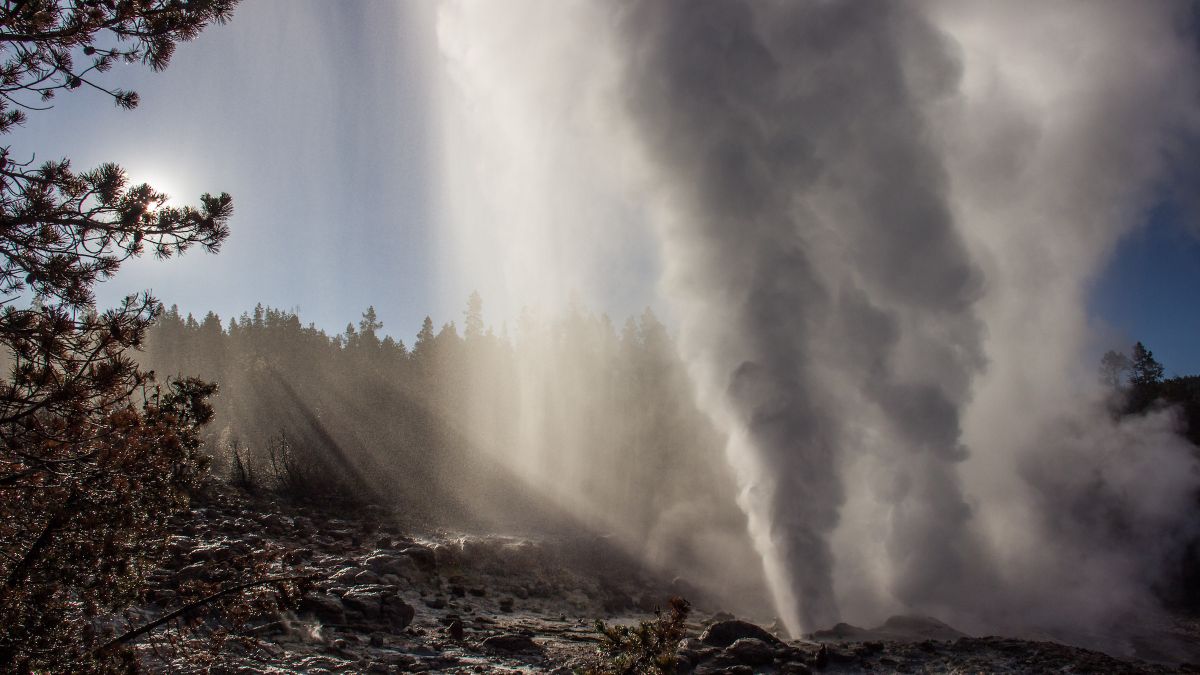Geyser hides underneath Yellowstone National Park He woke up recently. But don’t worry: this doesn’t mean that the massive volcano below the park will soon erupt, according to a new study.
In March 2018, after a nap of 3.5 years, Steamboat Geyser Suddenly it erupted, dispersing steam, mud, sand, and rocks in the air. The sleeper geyser previously erupted 32 times in 2018, breaking the record 48 times in 2019 and 48 again in 2020 (its previous record of 29 explosions was set in 1964), The US Geological Survey reported Monday (January 4).
Some scientists feared that the river’s dramatic eruptions were a harbinger of volcanic activity in Yellowstone. But it turns out that the repeated eruptions of Steamboat volcano do not herald a volcanic eruption, according to the new study published online January 4 in the journal. Proceedings of the National Academy of Sciences.
Related: Rainbow Basin: Pictures of Yellowstone’s Large Colorful Hot Springs
Yellowstone’s giant volcano has not experienced a major eruption in 70,000 years, but scientists are constantly looking for hints about when the next „big bang“ will happen. It is also difficult to predict what are called hydrothermal eruptions, or geysers, which can be deadly. In December 2019, 22 people died unexpectedly A hydrothermal explosion in the Isle of Wight, New Zealand.
“Hydrothermal eruptions – blasts of hot water mainly because they come into contact with hot rocks – are one of the biggest hazards in Yellowstone,” said lead study author Michael Manga, professor of Earth and Planetary Sciences at the University of California, Berkeley, He said in a statement. „The reason it is problematic is that it is very difficult to predict; it is not clear if there are any precursors that would allow you to give a warning.“
While Steamboat Geyser awoke again, its sudden activity did not coincide with the movement of underground magma often seen before a volcanic eruption.
This does not mean that the geology around Steamboat Geyser has not changed. Before Steamboat woke up again, the ground around the geyser rose, Seismic activity Manga and his colleagues found that the area increased somewhat and the area started to release more heat into the atmosphere than before. But other inactive hot springs in the immediate vicinity, known as the Norris Geyser Basin, have not been restarted, and the groundwater temperature driving the Steamboat eruption has not increased.
Moreover, with the exception of the first eruption in 2018, researchers found that none of the Steamboat explosions occurred after periods of high seismic activity.
„We didn’t find any evidence of anything major [volcanic] Manga said the eruption is coming. „They were also unable to determine why Steamboat came back, and described the reason for its reactivation as“ mysterious „in the study.
Long and frequent bangs
While investigating, the team also revealed why the Steamboat spikes are so high, making it the highest active geyser in the world. By comparing the plumes of 11 geysers in Chile, Iceland, the United States and Russia to the estimated depth of the water tank feeding each spring, the team learned that deeper reservoirs lead to taller eruption jets. In the case of Steamboat, there is a reservoir located about 82 feet (25 meters) underground with the highest column being 277 feet (115 meters).
Meanwhile, two geysers in Chile, with tanks 6.5 feet, 16 feet (2 and 5 meters) underground, triggered a volcanic eruption only 3 feet (1 meter) high.
„The steamboat is longer, because the water is stored there at a deeper depth than in other heaters, and therefore, more energy is available to operate the explosions,“ the researchers wrote in the study.
The team also determined that changes in precipitation and snowmelt were largely responsible for the variation in Steamboat eruptions. The researchers said that melting snow and rain entered the aquifer during spring and early summer, causing the groundwater pressure to rise. Likewise, during the winter season, less water enters the aquifer, resulting in lower water pressure and longer periods between eruptions.
Manga said that the water in the reservoir comes from deep within the earth, so the water that erupts in a geyser volcano eruption is decades or even centuries old.
Originally published on Live Science.

„Total Social Media Ninja. Introvertiert. Schöpfer. TV-Fan. Preisgekrönter Unternehmer. Web-Nerd. Zertifizierter Leser.“


